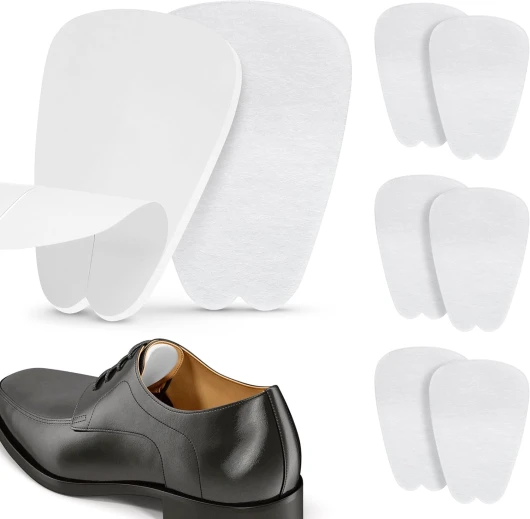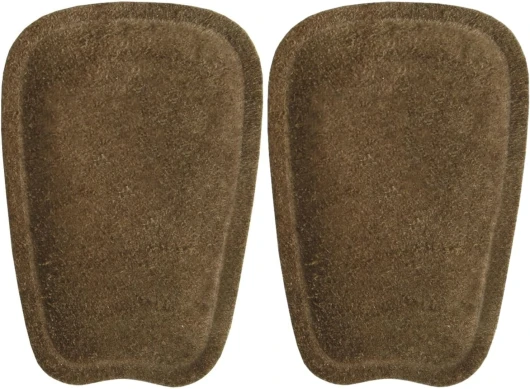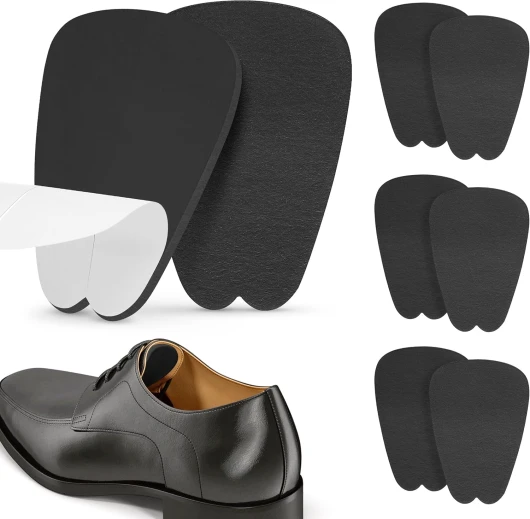
Understanding the Role of Tongue Pads in Hiking Boots
The Silent Support of Hiking Boots
For outdoor enthusiasts, experienced hikers, and mountaineers, the importance of footwear cannot be overstated. A lesser-known yet impactful component of hiking boots comes in the form of tongue pads. These soft inserts are strategically placed under the shoe tongue to enhance comfort and support during hikes, making them indispensable for optimal foot health.
Tongue pads work by providing additional cushioning, thereby protecting the top part of your foot from undue pressure that could lead to discomfort or injury over time. As they subtly adjust the fit of your boot, tongue pads help in bridging any size disparities, a common issue encountered when dealing with different brands of boots and their varying shoe sizes.
Constructed from materials like memory foam, leather, or suede, these pads are not just about adding a layer of comfort. They also play a critical role in improving shoe fit and enhancing heel grip, meeting the goal of reducing heel slippage. Preventing such movement within your boots is essential for maintaining stability on rugged paths where every step counts.
Moreover, shoe tongue pads are user-friendly and adaptable to various types of footwear, supporting integration with existing shoe care routines. Available at a variety of price points, they offer a cost-effective solution for enhancing your hiking excursions without breaking the bank. Many outdoor gear aficionados value products that offer free shipping, facilitating an economical purchase.
For those considering a footwear upgrade, checking out how vibrant red boot laces can complement the overall boot design might be of interest. A closer look at this dynamic addition to your hiking gear could be worthwhile as you seek to add a touch of individuality and functionality to your feet’s best supporters.
Benefits of Using Tongue Pads for Shoes
Advantages of Incorporating Shoe Tongue Pads
Adding tongue pads to your hiking boots not only enhances comfort but also significantly improves the shoe fit. These pads offer a tailored solution for hikers facing issues such as heel slippage or uneven pressure across the foot. Many hikers appreciate how these pads provide added cushioning, which can be particularly beneficial if you experience discomfort on the top of the foot during long hikes.
Tongue pads are not just about comfort; they play a crucial role in promoting foot health. By ensuring an even distribution of pressure, they help in reducing the risk of blisters and calluses. Moreover, they can assist in alleviating the discomfort caused by tight footwear, especially if you're wearing shoes made of less forgiving materials like leather or suede.
For those concerned about shoe care, using tongue pads can also serve as a preventive measure against common shoe wear issues. They act as a barrier that protects the delicate inner part of your boot from the friction that comes from hiking activities. Additionally, they can be a cost-effective way to fine-tune the fit of your footwear, eliminating the need for frequent purchases or returns due to sizing myths.
With options like memory foam varieties, tongue pads can also offer arch support, making them a great addition for anyone with arch-related concerns. By incorporating these kinds of pads into your hiking routine, you ensure a more comfortable and injury-free experience.
Enhancing your hiking gear doesn't have to break the bank either. Many retailers offer tongue pads at a regular price with excellent deals such as free shipping to keep the overall cost down. By choosing the right size and material, whether synthetic or from brands like Pedag, you can easily add them to your cart and enjoy the newfound comfort.
For more ideas on how to brighten up your hiking ensemble, consider exploring the benefits of vibrant red boot laces which can offer both functional and aesthetic enhancements to your hikes.
Choosing the Right Tongue Pads for Your Hiking Boots
Factors to Consider When Choosing Proper Padding
When looking to enhance your shoe fit with tongue pads, several factors can help you determine the ideal choice for your footwear needs. Here are essential considerations to ensure you're making the right pick:- Materials and Comfort: Look for tongue pads made from comfortable materials like memory foam or leather. Memory foam pads conform to the shape of your foot, providing extra cushioning, while leather pads offer durability and moisture-wicking properties, making them suitable for regular hiking shoes.
- Size and Fit: It's crucial to assess the size of the tongue pads in relation to your shoe size. Properly sized pads ensure an optimal fit, avoiding unnecessary pressure on your top foot. If you're shopping online, make sure to check size guidelines and refer to user reviews about fit and comfort.
- Adhesive Backing: A reliable adhesive backing on tongue pads is essential for maintaining their position during hikes. High-quality adhesive reduces the risk of pads shifting, providing consistent support. Consider the level of adhesion particularly suited for activities involving extensive foot movement.
- Heel and Arch Support: Some tongue pads come with additional features like arch support or heel grip. If your hiking boots require an added layer of support or you experience heel slippage, seeking pads that provide dual benefits can offer enhanced comfort and prevent foot fatigue.
- Brand Reliability: Check for reputable brands known for foot health products, such as Pedag. Trustworthy brands often provide better quality assurance, minimizing the risk of common issues like pads coming off or causing discomfort.
Installation Tips for Tongue Pads in Hiking Boots
Seamless Integration for Maximum Comfort
The first step toward a seamless walking experience is installing tongue pads in your hiking boots correctly. Properly placed tongue pads ensure that you have a snug fit, minimizing discomfort and improving foot health during your hiking adventures. To begin with, ensure you have the right pair of shoes prepared. It’s advisable to select tongue pads that are of the right size and material, whether it’s leather, suede, or memory foam, to suit your boots and foot shape. Keep in mind that different pads provide different levels of comfort and support. When installing the pads, start by removing the laces from your footwear to expose the shoe tongue clearly. Next, clean and dry the shoe tongue and surrounding areas to ensure the adhesive backing on your tongue pads sticks firmly. You don’t want your pads shifting mid-hike! Now, peel off the protective cover from the adhesive back of the tongue pad. Press the pad against the shoe tongue, aligning it with the top foot area where it will provide maximum cushion and protection. You'll notice how the pad adds a layer of comfort, potentially reducing the regular pressure or irritation in that zone. Ensure the pads are evenly positioned before securing the laces back on. Correct placement can enhance the fit of your boots, minimizing issues like heel slippage and ensuring better arch support. Adhesive-backed tongue pads are usually very reliable, but for a more permanent solution or if you experience persistent sliding, shoe trees or additional adhesive might help keep your pads snugly in place. By following these steps, you turn your hiking boots into a more supportive and comfortable environment for your feet. Whether you’re conquering rugged terrains or enjoying a casual forest walk, this simple shoe care step can make a world of difference in your hiking experience. Add the suitable tongue pads to your cart, with options like free shipping, and elevate your hiking adventures.Common Challenges and Solutions with Tongue Pads
Overcoming Obstacles with Shoe Tongue Pads
For outdoor enthusiasts and experienced hikers, shoe tongue pads can elevate your hiking experience by enhancing toe and ankle comfort. However, integrating these pads into your hiking footwear may come with a few challenges. Here's how to tackle them effectively:- Adhesive Issues: The adhesive backing on tongue pads can lose its stickiness over time, especially in wet conditions. To remedy this, ensure the shoe and pad surfaces are clean and dry before installation. For more durability, consider using additional adhesive suitable for footgear, like specialized glue used in shoe care.
- Fit and Sizing Confusion: With various shoe sizes and different foot shapes, getting the right fit can be tricky. To mitigate this, test the pads while wearing your footwear with the same socks you plan to hike in. Some users find that pairing tongue pads with heel pads can further improve overall shoe fit, minimizing heel slippage and providing balanced arch support.
- Material Concerns: Leather and suede shoes may react differently to the adhesive, potentially leading to discoloration or weakening of the upper shoe material. To prevent this, consider using tongue pads made from memory foam or other soft, cushioning materials known for their gentle interaction with different shoe materials.
- Discomfort or Pressure Points: Improper installation can lead to discomfort or unexpected pressure points on the foot. Ensure the pad is placed properly at the top foot area and adjusts to the shoe's natural shape. This will not only help in maintaining foot health over prolonged hikes but also enhance shoe fit, making your journey more pleasurable.


















